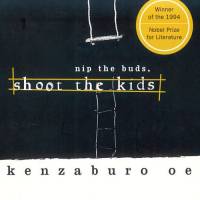Fiercely lyrical and tenderly dark, Kenzaburo Oe's "Nip the Bud, Shoot the Kids" marked the literary ascent of a Japanese writer whose star continues to shine internationally and at home. Written when he was just 23 years old, the 1958 novel can be read as existential coming-of-age, an indictment of war-time cruelty and a consideration of society and the outsider, uniting Oe's roots as a boy raised under World War II militarism and as a student of French literature at Tokyo University.
Nip the Bud, Shoot the Kids, Kenzaburo Oe, Translated by Paul St. John Mackintosh, Maki Sugiyama
Grove Press, Fiction.
This short novel packs a stunning emotional punch. A group of young misfits from a reformatory are evacuated from war-torn Tokyo to the countryside. When the boys are suddenly abandoned after the villagers flee, leaving them locked in for fear of the plague, their first innocent reaction is one of compassion. Making a stray dog a pet, helping an equally abandoned Korean boy, sheltering a panicked deserter, the boys nonetheless can not triumph over the cruelty of humanity nor the hopelessness of their situation.
Oe was awarded the Nobel Prize in Literature in 1994, and his later works reinvented the boundaries of contemporary fiction through metafiction and further experiments in style, thematically informed by political, social and philosophical issues as well as his personal struggles as a father whose first child was brain-damaged from birth. For any fan of Japanese literature, Oe's works are required reading, and with so many titles to choose from, why not start with the first?
Read archived reviews of Japanese classics at jtimes.jp/essential.


















With your current subscription plan you can comment on stories. However, before writing your first comment, please create a display name in the Profile section of your subscriber account page.